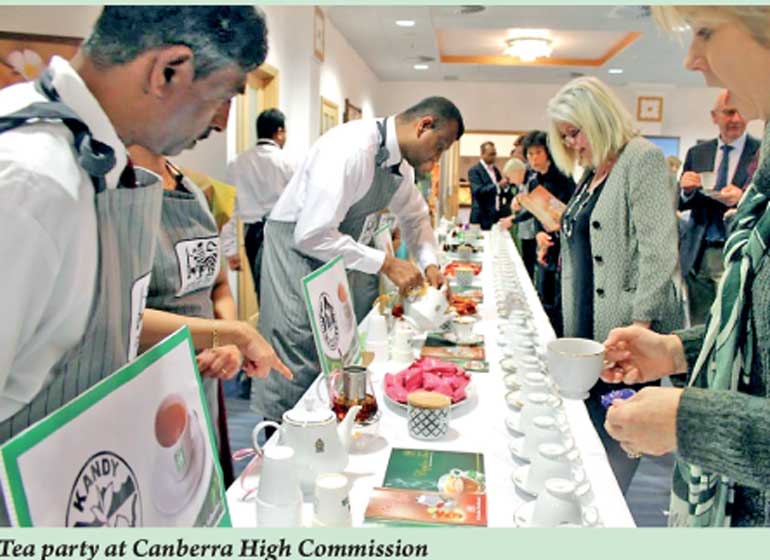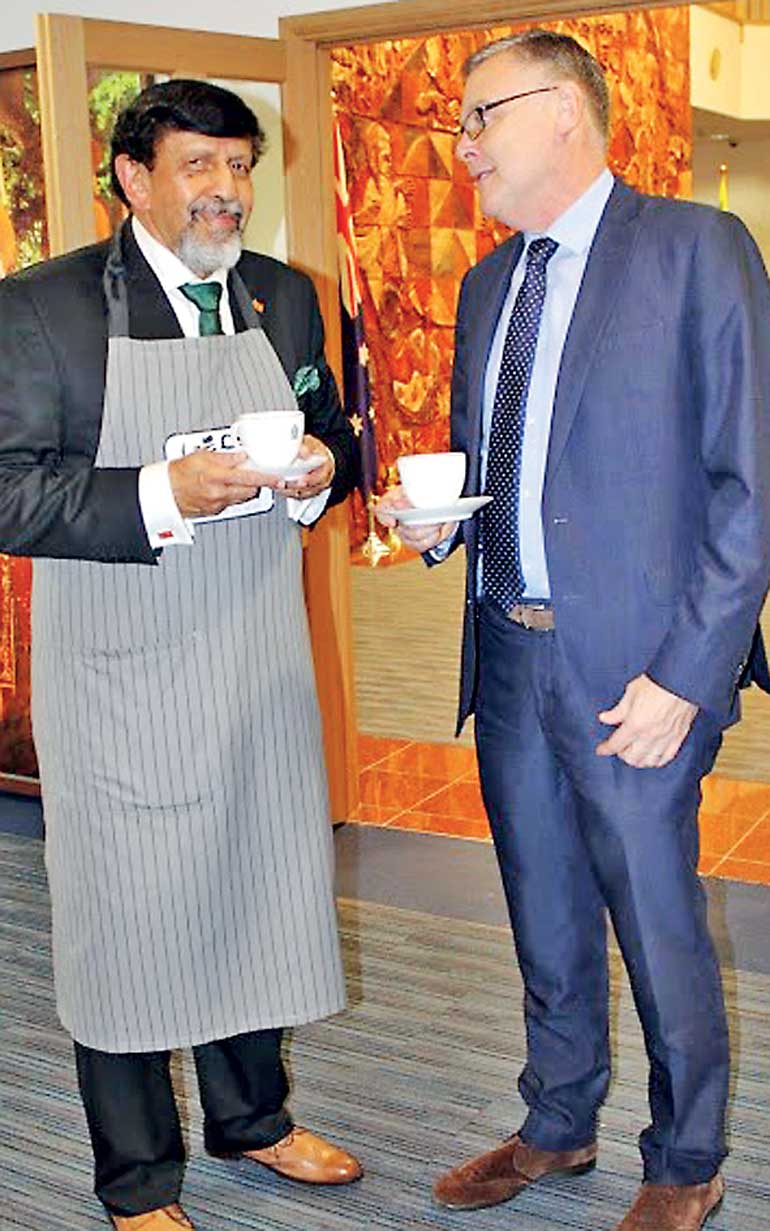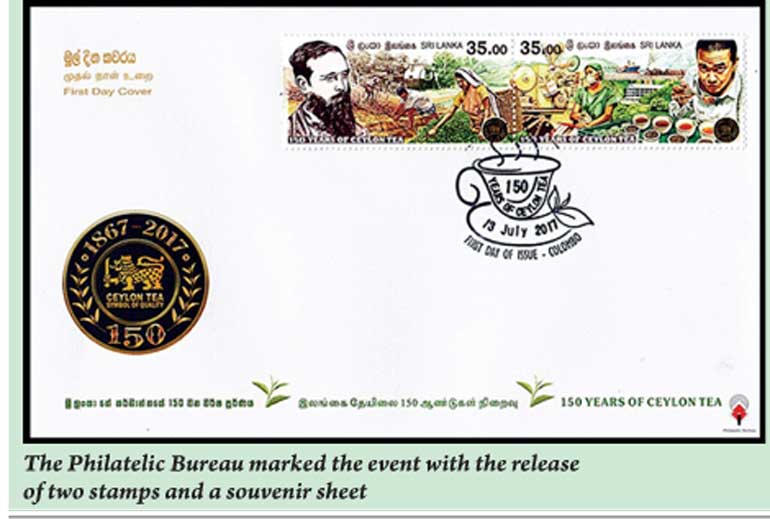Friday Nov 14, 2025
Friday Nov 14, 2025
Saturday, 29 July 2017 00:05 - - {{hitsCtrl.values.hits}}
By D.C. Ranatunga
It drives away all pains in the Collick proceeding from Wind, and purgeth safely the Gall.
It maketh the Body clean and lusty.
It helpeth the Head-ach, giddiness and heaviness thereof.
It removeth the Obstructions of the Spleen.
It is very good against the Stone and Gravel, cleansing the Kidneys and Vriters, being drank with Virgins Honey instead of Sugar.
It taketh away the difficulty of breathing, opening Obstructions.
It is good against Lipitude Distillations, and cleareth the Sight.
It removeth Lassitude, and cleanseth and purineth adult Humors and a hot Liver.
It is good against Crudities, strengthening the weakness of the Ventricle or Stomack, causing good Appetite and Digestion, and particularly for Men of a Corpulent Body, and such as are great eaters of Flesh.
It vanquisheth heavy Dreams, easeth the Brain, and strengtheneth the Memory.
It overcometh superfluous Sleep, and prevents Sleepiness in general, a draught of the Infusion being taken, so that, without trouble, whole nights may be spent in Study without hurt to the Body, in that it moderately heateth and bindeth the mouth of the Stomach……
This is the text of an advertisement dating back to 1670s preserved in the British Museum under the title ‘Advertisement for Tea’. It is the work of a pioneering retailer named Thomas Garway (1632-1704) who is credited with offering tea for the first time to customers of his London coffee house. The advertisement had been displayed in an11x15 inches broadsheet folio.
Researches state that while Thomas Garway promoted the ‘virtues of tea’ particularly from the point of view of health, he was reassuring patrons that to consume the beverage meant joining an elite community of scholarly learning and exotic taste. He was getting the tea from China. First promoted as a medical remedy, tea was expensive and exclusive at the initial stages until the end of the 18th century when things changed and it became a common household product.
Sri Lanka has been celebrating ‘150 Years of Ceylon Tea’ during this year, climaxing with a four-day International Tea Convention in Colombo from 8-11 August.

Globally a tea celebration was held at the Sri Lankan diplomatic missions in major cities early this month. It was a unique 24-hour tea party at 5 p.m. in every time zone from East to West across the world.
While invitees enjoyed the party with typical Sri Lankan snacks and sweets being made available, it was described as the Sri Lanka tea industry’s opportunity “to express its gratitude to all those people and organisations that shared this journey with us and whose history is entwined with Ceylon Tea over the years”.
Kumar Sangakkara was featured in a TV invitation to join the celebration. Reports indicate the celebration was quite a success. If the embassies were able to achieve what the High Commission in Canberra did, it certainly would have accomplished the desired objective.
Having been a ‘tea man’ himself leading one of the largest business conglomerates in Sri Lanka, George Steuart & Company for several decades, High Commissioner Somasunderam Skandakumar was in familiar ground to entertain tea businesses, traders, travel writers and selected academics, officials and diplomats who were invite for the occasion. After the formalities were over, sporting a ‘Ceylon Tea’ apron he joined the staff to serve tea and chat with the guests.
While the Philatelic Bureau marked the event with the release of two stamps and a souvenir sheet, the Central Bank issued a special coin to mark the event. One of the stamps featured the pioneer of Ceylon Tea, James Taylor.
Taylor came over at a time when adventurous young Englishmen were keen to come to Asian colonies where plantations were being started. He joined the firm of G & J A Hadden, one of several companies recruiting young men to go out to Ceylon. At the time of the ‘tea adventure’ (1867) he was the superintendent of Loolecondera Estate in Hewaheta in the Kandy District.

Taylor’s tale
While leading a quiet life in Sri Lanka after retirement, Taylor wrote about the early days of tea planting: “The credit for starting the tea industry in Ceylon as well as cinchona planting, belongs to Messrs. Harrison and Martin Leake, trading as Keir Dundas & Co., who were my employers and proprietors of Loolecondera. I learned manufacture mainly from others and from reading, but it took a lot of experimenting before I was successful. About the time we began planting, China tea from seed supplied by Peradeniya Gardens, a Mr Noble, an Indian tea planter from Cachar, passed through, and I got him to show me the way to pluck and wither and roll tea. He told me about fermenting and panning and the rest of the process then in vogue. Afterwards when Mr Jenkins of the Ceylon Company, an old Assam planter, came to the country, he called on me and I made a batch of tea under his direction.” (Mercantile Lore – Sir Thomas Villiers).
Sir Thomas Villiers states that the name of G H K Thwaites, Director of the Royal Botanical Gardens, Peradeniya (1849-80) cannot be omitted as an early pioneer of the tea industry. “Coffee was everyone’s hobby, and little notice was taken of any other product, but as early as 1860, tea seed was advertised for sale at Peradeniya, and Dr Thwaites was even then advocating its cultivation. It is, however, with cinchona that Dr Thwaites’ name is closely associated.”
Before Taylor
There is also reference to one or two planters who had imported plants from China and Assam in 1841-42. The ones from China had been planted on Rothschild Estate, Pussellawa and those from Assam on Pen-y-lan, Dolosbage. In the chapter on ‘The Tea Industry’ in ‘Twentieth Century Impressions of Ceylon,’ M Kelway Bamber says that the first tea was apparently manufactured in Pussellawa by Messrs. Worms, but the cost was prohibitive.
“The plants throve well, however, on Kondegalla on the Ramboda Pass at about 4,000 ft. elevation, and in 1865, the Ceylon Company Ltd., took over the properties of Messrs. Worms, including the small extent of tea on Kondegalla. Attempts were made at the time to manufacture the tea by experienced Indian planters and Bengali coolies, but so little success was achieved that Ceylon planters generally did not take up the cultivation,” he writes.
Bamber adds that an exception to the rule was Mr Taylor of Loolekondera Estate “who collected seeds from Peradeniya and planted them along roadsides in 1866”. He also refers to an experienced Ceylon coffee planter, Arthur Morice who was sent to report on the Assam tea districts whose report was later published by the Government. A consignment of Assam hybrid tea seed was the imported and planted on Loolecondera, in a forest clearing of 20 acres.

“Although the cultivation of this tea met with a fair measure of success, it was not until Mr William Cameron, an ex-Indian planter, so improved the local system of pruning and plucking tea as to show a wonderful difference in increased crop returns that Ceylon planters show sufficient inducement to cultivate tea on a large scale.”
While plants of both the Assam hybrid and the China variety were distributed from the Peradeniya and Hakglala Gardens, by 1883, seed became available from old plantations and tea cultivation rapidly expanded. The acreage under cultivation rose from 10 acres in 1867 to 200 acres in a year and to 11,350 acres in 1881. By the turn of the century it had increased to 384,000 acres. About 400,000 coolies, mainly Tamils from South India, were working directly under the supervision of Europeans.
According to Bamber, they were good workers and were well looked after, medical assistance being rendered free. “Their conditions of living and their power to earn money are far superior to those prevailing in their native villages, and most of them are able to save an acquire land out of their pay,” he wrote.
Records of tea exports maintained by Customs show 23 lbs being exported in 1873, rising to 171,183,558 lbs in 1905 earning an income of 59,564,250 rupees. Then the average price in London was 7 pence and in Colombo 34 cents. The bulk of exports was to UK (113 million lbs) in 1905.
While ‘Tea & Health’ was the theme to promote tea way back in the 17th century, in recent history we continuously heard the ‘Queen of Song’ Rukmani Devi singing the identical virtues in ‘Thei pan dina dina wedi wediyen – Beemen sirurata sapa vadive’.